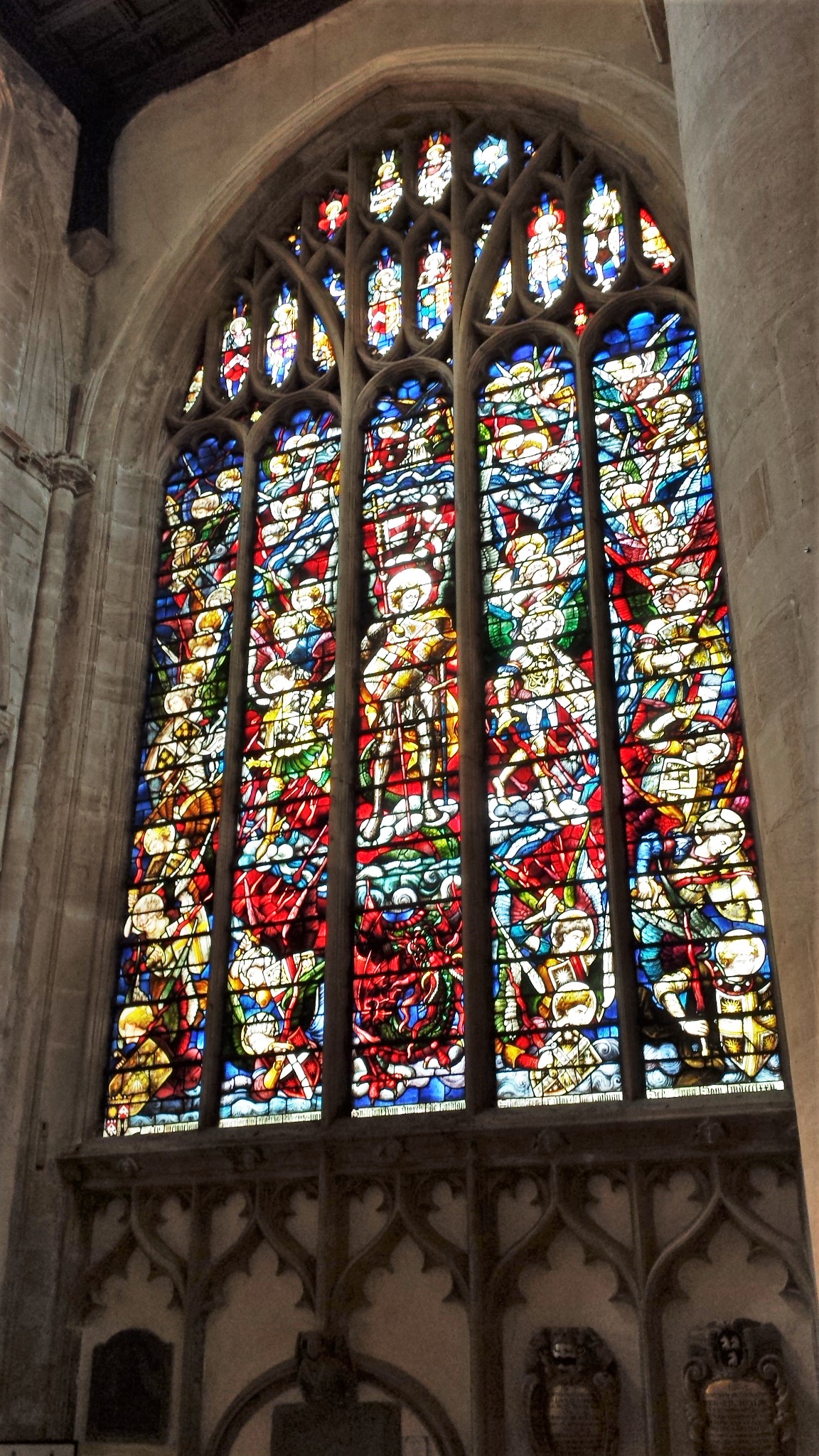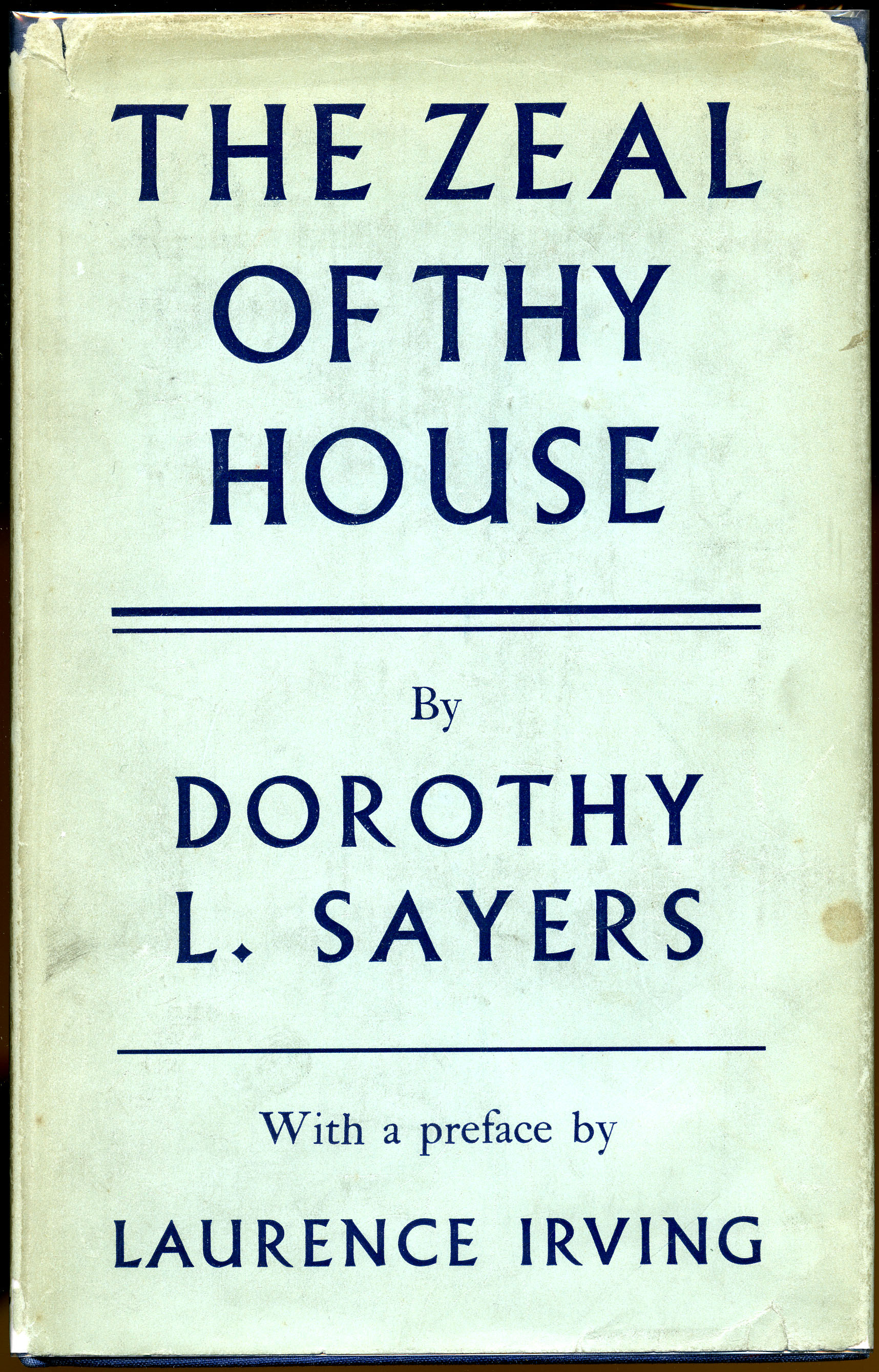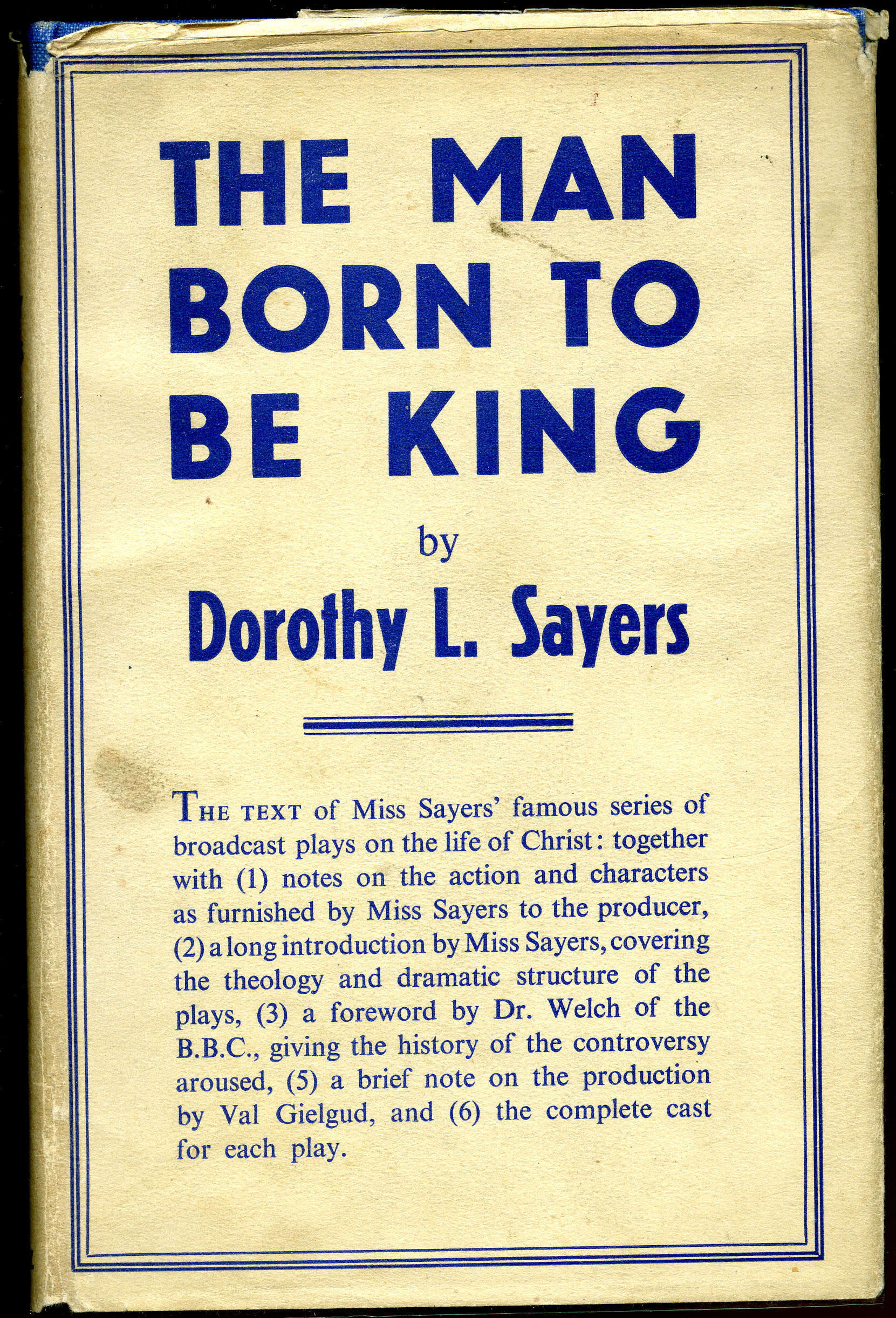The Transforming Imagination of Dorothy L. Sayers
Creativity for the Cause of Christ
Words: Dr. Crystal Downing, Co-Director of the Marion E. Wade Center and co-holder of the Marion E. Wade Chair in Christian Thought at Wheaton College
Imagination and the arts transformed Dorothy L. Sayers (1893-1957), turning her into an agent of transformation for others. In the early 1940s, Sayers led thousands of people to take the gospel message seriously for the first time in their lives. She did so not by employing sophisticated philosophical arguments or astute apologetics, but by engaging imagination and the arts. Her life story might help Christians today think about the powerful way visual and literary art can generate the aroma of Christ to those who are perishing (2 Cor. 2:15).

Christ Church Cathedral Oxford
Laura Schmidt
The only child of an Anglican clergyman, the adolescent Dorothy considered works of fiction far more aromatic than homilies in church. Though she did not embrace atheism as did the adolescent C. S. Lewis, she found the pieties and proprieties of conventional Christianity annoying. In her mid-teens she composed a poem that compared rainwater running through the mouth of a gargoyle outside a church to a sermon spouted by the parson inside, concluding that she found the gargoyle much more delightful. Feeling compelled during boarding school to be confirmed at Salisbury Cathedral, she later complained that this ritual expectation led her to resent religion for years. Indeed, when she received a scholarship from Oxford University, she was delighted that her college did not require chapel attendance, and she spent more time asking people for cigarettes than for spiritual advice.
It makes sense, then, that when Sayers started writing detective fiction in her late twenties she made her famous amateur sleuth, Lord Peter Wimsey, decidedly nonreligious. Though she gave him an earnestly Christian friend in her first novel, Whose Body? (1923), she marginalized that friend in future works, much as she had marginalized Christianity in her own life. Sayers, in other words, was like many college students today: Rather than renouncing personal faith, she compartmentalized it.
It would be art and imagination that kept her from abandoning Christianity altogether. As she told a friend several years before she died, Sayers probably would have become a scientific materialist, entirely disdainful of supernatural realities, if it were not for the imaginative writings of G. K. Chesterton. While still a “sullenly unreceptive adolescent,” Sayers read Chesterton’s quirky novel The Napoleon of Notting Hill (1904), which destabilized the idea that only science can explain truth.
Something similar happened to the adolescent Lewis. For him, a revelation occurred when reading George MacDonald’s unusual novel Phantastes (1858). Echoing Sayers’s awareness of the enduring influence of Chesterton, Lewis commented (in a published introduction to Phantastes) more than 30 years after his encounter with MacDonald’s work, that “the imaginative world of Phantastes” served to “convert, even to baptize . . . my imagination.” This does not mean that Phantastes converted Lewis to Christianity, or that The Napoleon of Notting Hill led Sayers to rededicate her life to Jesus. Lewis was in his early thirties before he became a Christian, and Sayers was in her mid-forties before she started seriously exploring the difference that ancient doctrine can make in daily existence. Instead, it was the art of MacDonald and Chesterton that enabled Lewis and Sayers to imagine a world predicated on universal standards of good versus evil— standards that cannot be explained by scientific empiricism or philosophical naturalism. MacDonald and Chesterton provided perspectives that freed Lewis and Sayers from the legalistic pietism and resistance to change they encountered among Christians during their youth. J. R. R. Tolkien does the same for many young people today.
Both Lewis and Sayers invoked the image of poorly made, stained-glass windows to represent the unimaginative, inflexible Christianity that turned them away from Christ in their youth—glass that stained their view of truth. As Sayers explained in her 1952 preface to The Surprise, a play Chesterton wrote near the end of his life, “To the young people of my generation, G. K. C. was a kind of Christian liberator. Like a beneficent bomb, he blew out of the Church a quantity of stained glass of a very poor period, and let in gusts of fresh air.” How appropriate, then, that Sayers’s commitment to a Spirit-filled faith was ignited decades after she read Chesterton by a literal church that was blown out by fire.

The Zeal of Thy House
Dorothy Sayers
In 1936, Sayers was asked to follow in the footsteps of the distinguished poet T. S. Eliot by writing a play celebrating the history of Canterbury Cathedral. Whereas Eliot chose Archbishop Thomas Becket as the protagonist for his play, Murder in the Cathedral (1935), Sayers chose someone with whom she could identify: not a saintly martyr like Becket, but a working-class craftsman hired to reconstruct Canterbury Cathedral after its choir burned down in the 12th century. In the play, which she called The Zeal of Thy House (1937), Sayers created characters that represented the various kinds of Christians she had encountered in her life, from self-righteous condemners of artistic imagination to those who believe that God can be glorified through the arts.
Most importantly, for both The Zeal of Thy House and the zeal of her faith, Sayers felt the need to theorize the relationship between artistic creativity and Christian truth. To do so, she ended her script with an angel proclaiming that, because God is a Creator, humans most fully illustrate that they have been created in the image of God (Gen. 1:27) when they themselves are creative. As Sayers’s angel explains, God “hath made man in His own image, a maker and craftsman like Himself, a little mirror of His triune majesty. For every work of creation is threefold, an earthly trinity to match the heavenly.” And the angel proceeds to define the threefold work as “Creative Idea, . . . Creative Energy begotten of that Idea, . . . [and] Creative Power, the meaning of the work . . . whereof none can exist without other,” for the “three are one.”
Sayers’s approach was so imaginatively original that theologians down through the decades have commended it, noting that attention to our own creative process supports the Christian doctrine that the universe was created by a Trinity. One theologian, in fact, encouraged Sayers to expand her angel’s proclamation into a longer study of creativity, which led to the publication of her book The Mind of the Maker (1941), a book that Lewis read and valued. Ironically, as Sayers explained to a friend near the end of her life, “I never, so help me God, wanted to get entangled in religious apologetics, or to bear witness for Christ, or to proclaim my faith to the world.” Nevertheless, by writing a play that explored the significance of art and imagination, Sayers transformed not only the thoughts of others but her own life. Increasingly being asked to write and talk about Christians topics, she never again published a detective novel, instead writing another Canterbury play and a nativity play for BBC radio, as well as doing broadcast talks about Christianity—even before Lewis was asked to do his Broadcast Talks that became Mere Christianity.
As a result, Christ became central to everything Sayers thought and wrote, enabling her to create a work of art that would transfix an entire nation. In 1940, BBC radio commissioned her to write 12 scripts about the life, death, and resurrection of Jesus. Spending over a year re-reading the Gospels, often in the original Greek, as well as Bible commentaries and church histories, Sayers was determined to avoid a “stained-glass-window” presentation of the Gospels, in which, rather than real men and women, Bible characters are “‘sacred personages,’ standing about in symbolic attitudes.”
To show that “God was executed by people painfully like us,” she appealed to people’s imaginations by using vernacular language, with Herod’s soldiers employing military terminology familiar to a country in the midst of World War II and Christ’s disciples sounding like working-class laborers. Without altering one jot of gospel truth, she imaginatively contextualized many of Christ’s parables, adding incidents—like getting short-changed at the market—with which BBC listeners could relate. After all, as John tells us at the end of his Gospel, Jesus did “many other things,” and “if every one of them were written down . . . the world itself could not contain the books that would be written” (John 21:25).
Ten days before the first broadcast, the BBC sponsored a press conference where Sayers read dialogue from some of her plays. Journalists thirsty for dramatic headlines picked up on the fact that not only did Sayers fail to use King James English for her scripts, but she also sometimes put slang into the mouths of Christ’s disciples. Worse, some of it was American slang! When the news broke, the Protestant Truth Society, which maintains offices in London to this day, joined other outraged Christians across England in a censorship campaign, demanding the plays be taken off the air. When Sayers and the BBC proceeded with the first broadcast on December 21, 1941, they received threatening phone calls and nasty hate mail. After the third play aired, the day that Japan began attacking Singapore, Britain’s greatest stronghold in Southeast Asia, one outraged Christian proclaimed that the subsequent Fall of Singapore (February 1942) was God’s retribution for Sayers’s blasphemous plays. As far as these Christian protesters were concerned, art and imagination were inimical to truth.

The Man Born to Be King
Dorothy Sayers
Creator God, in contrast, values creativity, making humans in his own image. Confirming his infinite ability to transform evil into good, God used the nationwide scandal to draw thousands of people to the truth. Numerous people indifferent, if not antagonistic, to religious programming tuned in to the broadcasts just to see what all the fuss was about. What they heard was the salvation message in language that made sense to them. Rather than impeding their sights by the stained glass of King James English, the plays became clear windows to truth beyond church gargoyles. As Sayers told Lewis, she received thousands of letters from people saying how the 12 radio broadcasts had brought them into a new or renewed relationship with Jesus Christ. Lewis himself was so moved by the print version of the plays, called The Man Born to Be King, that he read through it every year for his Lenten devotions for two decades. When he was asked late in life what had most fed his spiritual life, he identified four influences, one of which was The Man Born to Be King. We can safely assume, then, that Sayers’s artistic radio plays fed Lewis’s imagination in addition to his spirit as he conceptualized a creative new way to think about Christ in a novel called The Lion, the Witch, and the Wardrobe.
Unfortunately, some Christians all too often prefer the status quo. Rather than attempting to be the aroma of Christ to those who are perishing, they put up a stink about any idea, religious or political, that doesn’t conform to their pre-established opinions. Resisting the power of art and imagination, they worship convention more than Christ. Sayers, in contrast, recognized the power of art to break one-dimensional stained-glass images to allow in “gusts of fresh air.” This does not mean that she encouraged art merely as a means of evangelism, valued only for its ability to propagandize others. As far as she was concerned, not only do utilitarian goals undermine the inherent value of creativity, but they often result in shoddy workmanship that pushes people away from Christianity rather than drawing them in.
Evangelistic cinema provided Sayers a good example. In a speech she delivered eight months before scandalizing Christians with The Man Born to Be King, Sayers said of cheesy “religious films” she had seen, “Bad photography, bad acting, and bad dialogue produced a result so grotesquely irreverent that the pictures could not have been shown in churches without bringing Christianity into contempt.” Sayers therefore explicitly states in her introduction to The Man Born to Be King that “a work of art that is not good and true in art is not good or true in any other respect, and is useless for any purpose whatsoever—even for edification—because it is a lie.” It is a lie because, though proclaiming to honor God, poorly performed art shows contempt for the Creator in whose image we were made.
Sayers’s commitment to what she called “good work well done” was brought home in an interview held at the Marion E. Wade Center, which is the world’s preeminent archive for published and unpublished items by and about Lewis and six of his important influencers, including Sayers. During a podcast recorded in August 2018, Douglas Gresham, Lewis’s stepson, said that the first time he ever saw Lewis cry was upon hearing of the death of Sayers. Lewis recognized that Sayers had joined him on a 20th-century Emmaus Road, their vision clouded, as though by shoddy stained glass, until Christ broke bread that had been prepared by MacDonald and Chesterton. Like most fresh-baked breads, it had a wonderful aroma: the aroma of Christ to those who were perishing.
To learn more about the transforming work of Dorothy L. Sayers, see Crystal Downing’s recently published book Subversive: Christ, Culture, and the Shocking Dorothy L. Sayers.
